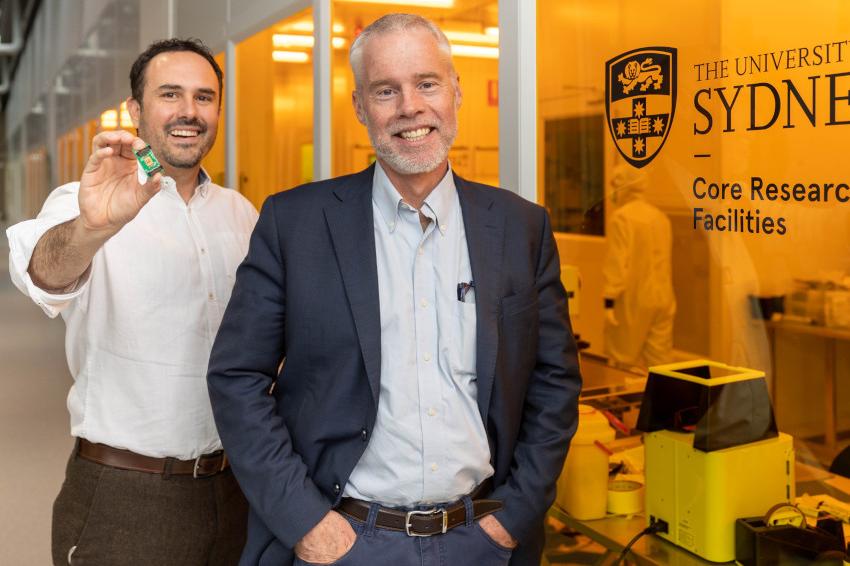New chip integrates electronics with photonic components
08.12.2023 - New device paves the way towards a new generation of compact, high-resolution RF photonic filters.
Researchers at the University of Sydney Nano Institute have invented a compact silicon semiconductor chip that integrates electronics with photonic components. The new technology significantly expands radio-frequency (RF) bandwidth and the ability to accurately control information flowing through the unit. Expanded bandwidth means more information can flow through the chip and the inclusion of photonics allows for advanced filter controls, creating a versatile new semiconductor device.
Researchers expect the chip will have application in advanced radar, satellite systems, wireless networks and the roll-out of 6G and 7G telecommunications and also open the door to advanced sovereign manufacturing. It could also assist in the creation of high-tech value-add factories at places like Western Sydney’s Aerotropolis precinct. The chip is built using an emerging technology in silicon photonics that allows integration of diverse systems on semiconductors less than 5 millimeters wide. Ben Eggleton, who guides the research team, likened it to fitting together Lego building blocks, where new materials are integrated through advanced packaging of components, using electronic ‘chiplets’.
Alvaro Casas Bedoya, who led the chip design, said the unique method of heterogenous materials integration has been 10 years in the making. “The combined use of overseas semiconductor foundries to make the basic chip wafer with local research infrastructure and manufacturing has been vital in developing this photonic integrated circuit,” he said. “This architecture means Australia could develop its own sovereign chip manufacturing without exclusively relying on international foundries for the value-add process.”
Eggleton said the invention means the work at Sydney Nano fits well with initiatives like the Semiconductor Sector Service Bureau (S3B), sponsored by the NSW Government, which aims to develop the local semiconductor ecosystem. Nadia Court, Director of S3B, said, “This work aligns with our mission to drive advancements in semiconductor technology, holding great promise for the future of semiconductor innovation in Australia. The result reinforces local strength in research and design at a pivotal time of increased global focus and investment in the sector.”
Designed in collaboration with scientists at the Australian National University, the integrated circuit was built at the Core Research Facility cleanroom at the University of Sydney Nanoscience Hub, a purpose-built $150 million building with advanced lithography and deposition facilities. The photonic circuit in the chip means a device with an impressive 15 gigahertz bandwidth of tunable frequencies with spectral resolution down to just 37 megahertz, which is less than a quarter of one percent of the total bandwidth. Eggleton said: “Led by our impressive PhD student Matthew Garrett, this invention is a significant advance for microwave photonics and integrated photonics research. Microwave photonic filters play a crucial role in modern communication and radar applications, offering the flexibility to precisely filter different frequencies, reducing electromagnetic interference and enhancing signal quality.”
“Our innovative approach of integrating advanced functionalities into semiconductor chips, particularly the heterogenous integration of chalcogenide glass with silicon, holds the potential to reshape the local semiconductor landscape”, Eggleton added. Senior Research Fellow Moritz Merklein said: “This work paves the way for a new generation of compact, high-resolution RF photonic filters with wideband frequency tunability, particularly beneficial in air and spaceborne RF communication payloads, opening possibilities for enhanced communications and sensing capabilities.” (Source: U. Sydney)
Contact
The University of Sydney
Sydney, NSW 2006
Australia
+61 2 8627-1444







